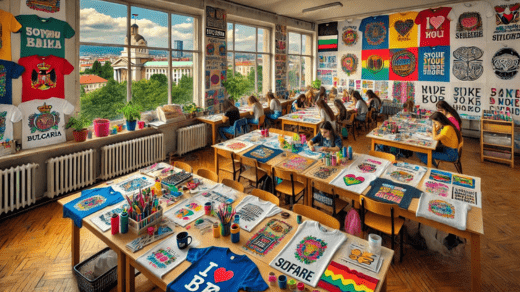Top 10 Art Supplies Every Professional Artist Should Have
As a professional artist, having the right art supplies can make all the difference in your creative process. The quality of your tools directly affects the outcome of your artwork, so investing in high-quality materials is essential. In this article, we’ll explore the top art materials that every artist should have in their toolkit to ensure they are well-prepared for any project. These essential artist tools will not only enhance your workflow but also elevate the quality of your art.
1. High-Quality Paints
For painters, investing in professional-grade paints is crucial for producing vibrant, long-lasting artwork. Whether you work with acrylics, oils, or watercolors, choosing high-pigment paints ensures richer colors and smoother application. Professional-grade paints offer better coverage and blendability, giving you greater control over your finished piece.
Tip: Brands like Winsor & Newton, Golden, and Sennelier are known for their superior quality in various paint mediums.
2. Durable Paintbrushes
A set of high-quality paintbrushes is an artist’s best friend. Look for brushes made with natural or synthetic fibers, depending on your preferred medium. For oil and acrylic painting, brushes with firm bristles are ideal for layering and creating texture. Watercolor artists should opt for soft, absorbent brushes like sable or synthetic alternatives.
Tip: Have a range of brush sizes and shapes (flat, round, filbert, etc.) to suit different painting techniques and details.
3. Artist-Grade Canvas or Paper
The surface you work on plays a significant role in the final outcome of your art. For acrylic and oil painters, high-quality canvas or canvas boards provide a sturdy, textured base. Watercolor artists should invest in watercolor paper that is thick enough to absorb water without buckling, typically 140 lb. or heavier.
Tip: For drawing and sketching, use acid-free paper to ensure your work remains archival and doesn’t yellow over time.
4. Professional Sketching Pencils
Every artist needs a reliable set of sketching pencils. Graphite pencils with a range of hardness (from 2H to 6B) allow you to create light sketches or deep shadows. Mechanical pencils are also great for fine details, while charcoal pencils are perfect for bold, dramatic sketches.
Tip: Start your collection with a variety of pencil grades to suit different sketching techniques, from light shading to dark outlines.
5. Palette Knives
Palette knives are essential tools for mixing paint and creating textured effects on canvas. Available in a range of sizes and shapes, they allow you to apply thick layers of paint, blend colors, or scrape away excess. This tool is a must-have for artists working with oils or acrylics who want to experiment with texture and impasto techniques.
Tip: Stainless steel palette knives are durable and easy to clean, making them ideal for heavy-duty use.
6. Easel
A sturdy easel is essential for painting comfortably and achieving accurate perspective. Whether you work in a studio or outdoors, an adjustable easel allows you to position your canvas at the perfect height and angle. For studio use, a large wooden easel offers stability, while lightweight, portable easels are ideal for plein air painting.
Tip: Look for an easel that is adjustable and easy to collapse for storage or travel.
7. Artist’s Palette
A palette is indispensable for mixing colors and organizing your paints. Acrylic and oil painters typically use wooden or glass palettes, which are easy to clean and provide a smooth surface for mixing. Watercolor artists might prefer a ceramic or plastic palette with wells for holding their paints and water.
Tip: Choose a palette that provides enough space for mixing but is also easy to hold or place on your work surface.
8. Precision Erasers
Not all erasers are created equal. For fine art, you need precision erasers that can remove small details without damaging the paper. Kneaded erasers are flexible and moldable, allowing you to erase small areas or create highlights in a drawing. For more precision, mechanical erasers are great for detailed work, while gum erasers work well for larger areas.
Tip: Keep a few different types of erasers on hand to suit various needs in your drawings or sketches.
9. Fixative Spray
For artists working with dry media like charcoal, pastels, or graphite, fixative spray is essential. Fixatives help protect your artwork from smudging and fading over time. Use a workable fixative to set layers as you work, or a final fixative to seal and preserve the completed piece.
Tip: Always use fixative spray in a well-ventilated area, and hold the can at a distance to avoid oversaturating your artwork.
10. High-Quality Drawing Ink
For illustrators, calligraphers, and ink artists, high-quality ink is a must. Choose a waterproof, fade-resistant ink that flows smoothly and dries evenly. India ink is a popular choice for its deep black color, but there are also a wide variety of colored inks available for more vibrant work.
Tip: Pair your ink with a set of fine pens or brushes for detailed and dynamic lines.
Having the right professional art supplies in your toolkit ensures that you’re always ready to bring your creative vision to life. From top art materials like high-quality paints and durable brushes to essential tools like palette knives and fixative spray, these items will help you work more efficiently and produce higher-quality results. By investing in these essential artist tools, you’ll not only enhance your technique but also enjoy a smoother, more enjoyable artistic process.
In schools in Sofia there are a lot of interesting occupations like drawing with pastels, making personalized t-shirts and gifts.

